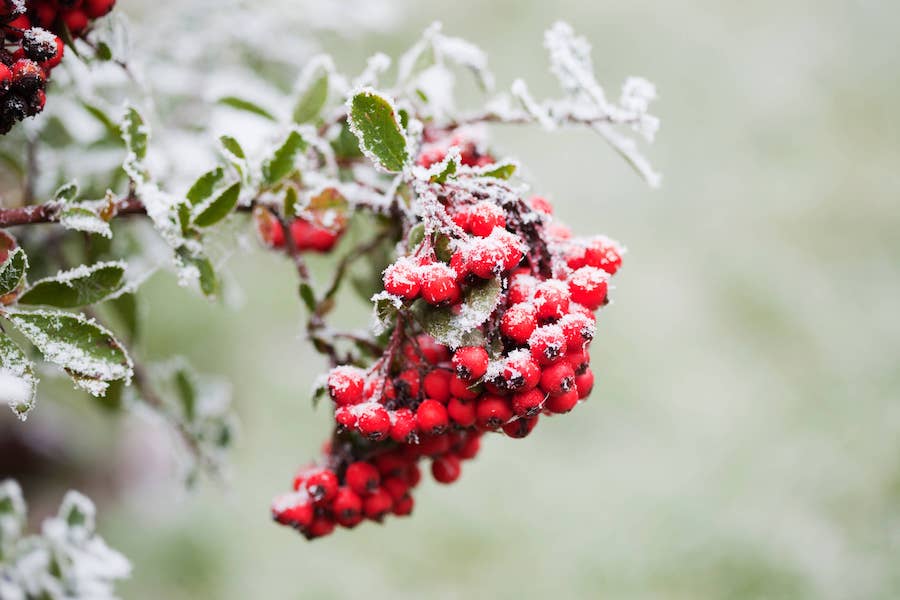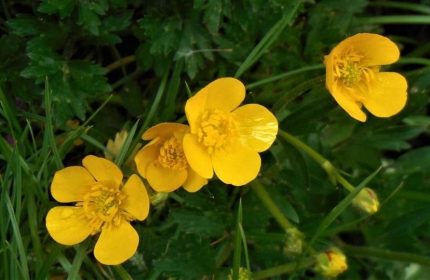The best shrubs to grow for festive winter berries
Holly and ivy have their place – but so do many others
Frosted winter berries should have pride of place both in the garden and home during the festive season. But which ones will last longest and provide most interest?
“The importance of berried shrubs increases the more we get into winter,” says Morris Hankinson, director and founder of Hopes Grove Nurseries . “At this time of year our gardens can look a bit sorry for themselves, so now is when winter-berrying shrubs start coming into their own.”
Hankinson has selected five easy-to-grow shrubs, which are suitable for growing in your borders or in pots, and should produce enough berries to give your Christmas displays festive cheer – and brighten up your garden too…
1. Holly

The most popular evergreen at Christmas, famed for its bright red berries and prickly leaves, holly can be found in gardens all over the country. Choose a female variety as that bears the berries (it should say on the label), because holly is dioecious, having male and female reproductive organs in separate individuals.
You don’t have to buy a male and a female plant to create berries though, as chances are that wherever you plant your holly, there will be a male plant somewhere nearby and bees will transfer pollen between plants, fertilising them when they flower in spring.
“We only grow female varieties in the nursery. I think it’s the occasional male planting in the wild hedgerow on our boundary is enough, because there are hundreds of hollies with berries on in the nursery,” says Hankinson.
How long the berries last depends on the weather and the birds, he adds, but they should hold until well after Christmas. If you bring cuttings indoors, leave it until the last minute and once in place, don’t move them until you are ready to take down the decorations. Like most shrubs, they won’t take kindly to constant central heating. If the berried cuttings are added to wreaths on front doors, they will last longer being outdoors.
Favourite variety: The female green holly, Ilex aquifolium ‘Alaska’, ideal for shrubs and hedges. Silver variegated holly, Ilex ‘Argentea Marginata’ has silver edges and red berries, while blue holly is named for for its glossy blue-green leaves and bright red berries and is extremely hardy.
2. Pyracantha
View this post on Instagram
“They are coming into their own, grow quickly and are hardy, and you can chop some decent-sized pieces to add to decorations. Alternatively, they will grow well in pots for a few years. Restriction of the roots drives a pyracantha to make berries,” says Hankinson.
The berries – which can be red, orange or yellow – can be taken by birds but are not their favourites, he points out. “Normally, either you’ve got to have a very protracted cold snap or it’s going to be later in the winter, say February, when the birds move on to them, when all the yummy stuff like the hawthorn (berries) have gone.”
If you need to trim them, prune them when the last berries have gone, which generally happens at the cusp of winter and spring. If you trim them too late, you will cut the flowers off and you won’t get the berries.
Favourite variety: “My favourite is ‘Soleil D’Or’, the yellow one, because it is so prolific. ‘Mohave’ is a really sturdy strong one with slightly bigger orange berries.”
3. Cotoneaster
View this post on Instagram
These evergreen shrubs can be used in hedging, or as wall shrubs and are ideally situated in full sun, although they will tolerate partial shade. Smaller varieties are low-growing and provide valuable ground cover, which will help suppress weeds. All cotoneasters produce small pink-white flowers in summer, followed by a profusion of berries, mainly red, but several produce yellow ones.
Favourite variety: Cotoneaster lacteus – the milk cotoneaster. “It’s the one with the most handsome foliage and a bigger leaf than others. It bears white flowers in the spring but has these bunches of pillar box red berries, which are at their best over the festive season. It’s one of the bigger cotoneasters so you can chop bits off it without ruining it.”
4. Callicarpa
View this post on Instagram
This deciduous shrub has luminous violet beads, which hang on the branches.
“It creeps up on you because in the summer it looks like a fairly ordinary green shrub, then you get the first frost and the leaves fall off to reveal the berries which smother the stems.”
Most will last fairly well into winter, Hankinson says, and are very easy to grow. They are not dioecious, so you only need one to produce berries. They produce long shoots, and you could use them as bare branches covered in berries in a floral decoration. They prefer sun or partial shade in reasonable soil that isn’t waterlogged in winter, or in a container with good quality potting compost.
Favourite variety: ‘Profusion’ produces huge clusters of berries in mid autumn, which can be added to vases of other stems and foliage.
5. Snowberry
View this post on Instagram
This is a shrub which really stands out in winter, producing pink-tinged summer flowers followed by clusters of large white berries during the colder months. “We sell them as hedging plants, but you can grow them as a shrub in a garden or as a container plant,” says Hankinson.
Mingle the bare branches in with some other foliage in your festive display, he suggests. Or give them centre stage in a pot outside a front door, perhaps with an evergreen behind them.
Favourite variety: “’Mother of pearl’ is absolutely stunning. It’s pretty nondescript in the summer, but when the leaves drop off it has berries on them which are a luminous, almost candy pink colour, the size of a blueberry.” There are many new dwarf ones available if you’re short of space, he adds.
The Press Association
Latest posts by The Press Association (see all)
- Princess Charlotte set to celebrate ninth birthday - May 1, 2024
- How edible flowers can make your dishes look and taste divine - April 30, 2024
- Beauty entrepreneur Liz Earle on turning 60: Ageing is a gift - April 30, 2024
- Unseen photo of William and Kate’s wedding released to mark 13 years of marriage - April 29, 2024
- The Tattooist Of Auschwitz author Heather Morris on why now is the perfect time for a TV adaptation - April 29, 2024




















